
There are many reasons to install soundproofing foam, whether it’s in your home, office, recording studio, or anywhere else. Depending on what your specific goals are, you may be asking yourself the not so uncommon question: “Does soundproofing foam work both ways?” There’s not a huge amount of information on the subject, but you’ll find out once and for all here.
So, does soundproof foam work both ways?
Soundproofing foam works both ways for the most part, but it’s most effective when the shape of the foam is uniform on both sides. The material of soundproofing foam does a lot of the soundproofing, but so does the shape in which it’s formed.
Installing soundproofing foam wherever you need a bit of silence can be a world of difference once you’ve achieved this end.
However, you don’t want to waste your time installing soundproofing foam when your goal is to have it work both ways. That’s why it’s important to understand how soundproofing foam works followed by properly installing it.
How Soundproof Foam Works
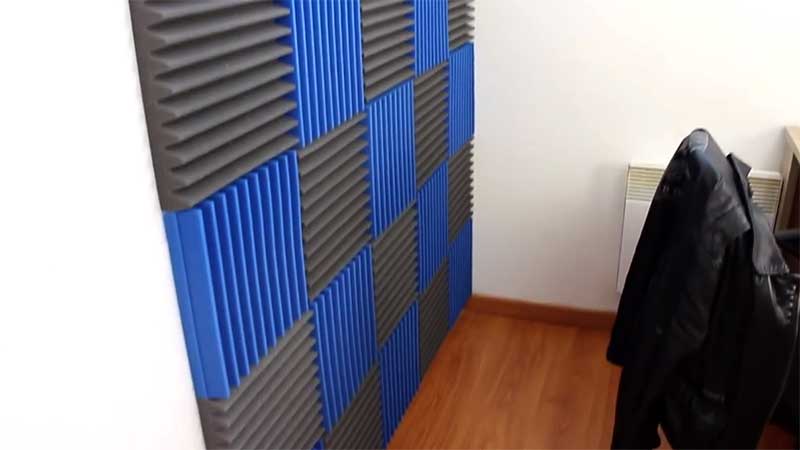
Soundproofing foam is an amazingly powerful material that’s commonly used to block and absorb various acoustical sounds.
You may want to keep your recording studio from noise pollution from the outside world.
Maybe you just want to have a more private home that keeps any noise going on indoors away from nosy neighbors.
Knowing how soundproofing foam works and how it can work both ways will save you both time and money.
The truth is there are many ways to go about soundproofing any space, but being able to do it both ways with soundproofing foam is not an uncommon strategy.
You can most definitely purchase and install soundproofing foam that works both ways, but you need to make sure that the material you’re using and the shape is consistent.
While this may seem a bit confusing why this is the case, it’s rather simple and only requires a bit of knowledge regarding how soundproofing foam works.
Soundproofing foam is a material that is able to more easily absorb and block sounds due to its porous, soft construction.
When sound waves come into contact with hard, flat surfaces, they simply bounce off of them (reflect) causing an echo. However, materials such as foam and other textiles have the opposite effect.
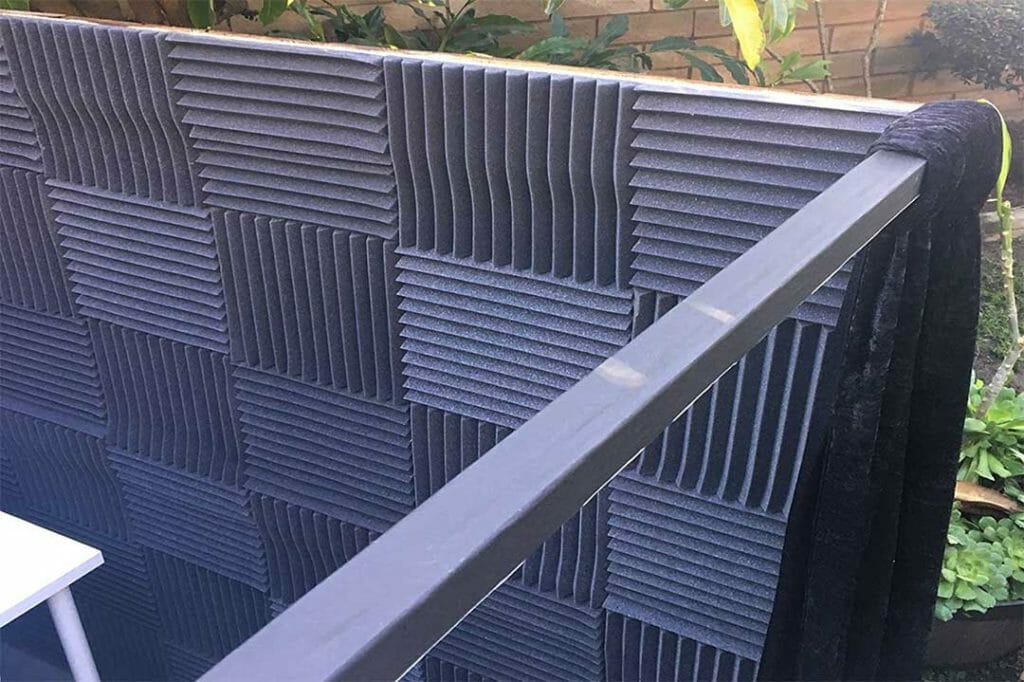
Every room I’ve ever soundproofed in my home and anywhere else has always used the acoustic foam by Mybecca. Mybecca’s Acoustic Eggcrate Studio Panels Soundproofing Wall Tiles (link to read reviews on Amazon) are perfect for soundproofing rooms and doing so both ways.
They’re hands-down the highest quality soundproofing foam tiles I’ve used at a price that I can agree with.
Sound waves moving through the air are vibrations made through the force of some source, like our mouths or a speaker, with those vibrations traveling through the air. These sound waves are thus a source of energy that can be either reflected or absorbed, with acoustic, soundproofing foam having the ability to absorb that energy.
Not only is the material important, but the shape of the material is also important. Flat surfaces provide a greater chance for sound waves to bounce off of them since they can come in at an angle to the soundproofing material since it’s traveling in a wave, which results in greater chances of reflection.
When the material contains more angles, the chance of interacting with the wave head-on is higher resulting in an increased chance of absorption if the material itself is absorbent.
If the material is reflective, like carved stone in a cathedral, there’s a greater chance of reflection occurring.
These are the exact reasons why you should install soundproofing foam that’s porous, soft, and shaped with various angles. And if you’re in need of getting your soundproofing foam to work both ways, you want to ensure that you install them on both sides of your panels so they face both directions with the proper material and shape.
There are a lot of options out there when considering the different types of acoustic foam for soundproofing your room or any other location. As long as you focus on materials that contain several properties we discussed, you’ll be well on your way to having a space of silence.
Best Acoustic Foam for Soundproofing
Choosing the right acoustic foam for soundproofing your noisy space is important to avoid spending too much money on products that simply don’t work.
Thankfully, there are a few brands that are well-known and trusted among the soundproofing community which I wholeheartedly suggest.
Mybecca Acoustic Panels Studio Foam Wedges (12-Pack)
I already suggested to you my favorite acoustic foam earlier, but the Mybecca Acoustic Panels Studio Foam Wedges (link to read reviews on Amazon) are also a great choice at a cheaper price. Some acoustic foam can get rather expensive, so this is a great option for those on a budget.
Mybecca is an amazing brand that produces high-quality products all around. I’m a huge fan because they always deliver on their promises, which is why I’ve used them for so long.
The acoustic foam panels are ideal for soundproofing and even come in a variety of patterns and colors that’ll match any space. Not only that, but they’re flame retardant and made 100% in the USA.
Foamily Acoustic Panels Studio Foam Wedges (12-Pack)
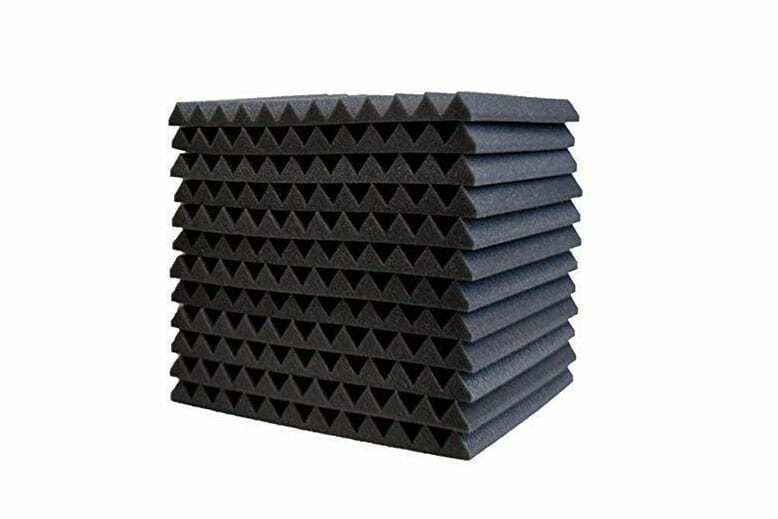
There are a lot of fantastic soundproofing brands out there, but not all of them are able to provide acoustic foam at the level of quality as the Foamily Acoustic Panels Studio Foam Wedges (link to read reviews on Amazon).
This set of acoustic foam is a great option for anyone looking to spend a little more to ensure their space is completely soundproof.
These acoustic foam panels by Foamily are fantastic and have a professional acoustic control, sound dampening foam material that rivals any professional studio sound panels.
This foam is perfect for recording studios, home theaters, offices, and more. You won’t be disappointed with these acoustic panels, that’s for sure.
How Much Acoustic Foam You Need
Before going out and buying a bunch of acoustic foam for your space, you should get a clear idea of how much you need to effectively treat your soundproofing needs.
Depending on your goals and the environment in which you’ll be installing your acoustic foam, you may want more or less foam.
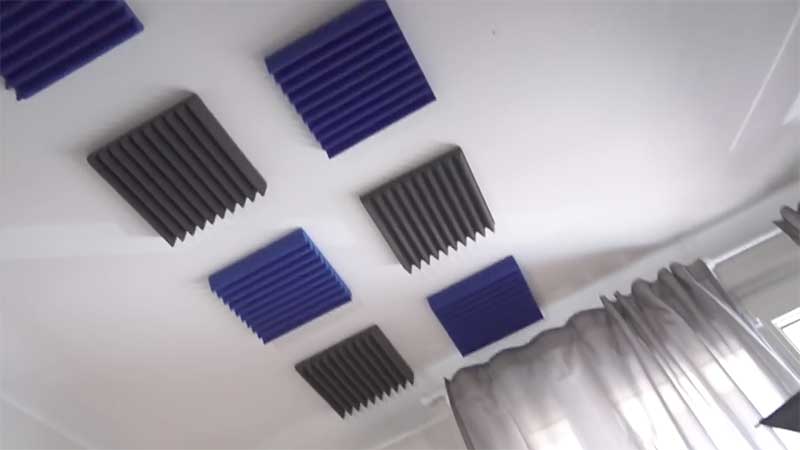
The go-to formula for determining how much soundproofing foam you should get is anywhere between 15% and 30% surface area coverage of your space. While this is a general statement which doesn’t take into account your exact needs, this is a great starting point for anyone looking to soundproof a room or anywhere else.
For example, if you had a room that had four walls coming to a total of 500 square feet of surface area, you’d want to consider purchasing anywhere between 75 and 150 square feet. It’s probably wise to start out on the lower end of the range and work your way up until you hit that soundproofing sweet spot.
However, you may want to treat a space that’s already has a lot of sound reflection, like a dance studio or gymnasium.
In that case, you should aim for around 50% or more coverage to ensure a decent amount of the sound is properly absorbed. Many people use this 50% coverage rule for home theaters as well, since it’s a sure-fire way to remove virtually all sound issues you may come across.
My suggestion is to purchase enough soundproofing, acoustic foam that works for your needs. That means starting out with a little bit of foam and working your way up from there. You may find that you prefer a bit of reflection in your space depending on the environment you’re in, so there’s no need to rush and spend money that can be saved for something else.
Can Acoustic Foam Block out Sound Completely?
You may wish to completely block sound out from wherever you are, which can be an enormous task depending on the environment and space you’re in. There are many reasons why you’d want to do this, especially if you have a business that depends on it, like a recording studio or acting set.
Acoustic foam can block out sound completely if installed facing both inward and outward while covering almost all the surface area of the space possible.
On top of that, ensuring there’s acoustic foam on the other side of the walls of the room you wish to soundproof is important/
The issue with attempting to soundproof a space 100% is the amount of effort and money required to do so.
As I mentioned, certain businesses depend on having a soundproof space that’s clean and clear of outside sounds. However, these businesses can afford it and will go to any length to ensure their spaces are completely soundproof.
However, if you’re looking to virtually guarantee no sound issues in your space, all that you really need to do is make sure you have enough foam installed on your walls and have them facing both inward and outward.
By following this advice, you’ll be well on your way to a soundproof space that you can find silence in.
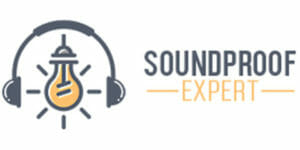
Nice read!
Im confused as to what direction to place these?
I want to stop some noise coming thru my apartment door so do I put the flat part against the door where the noise comes from or the angled parts?
thnx
Jef
This foam is used for acoustic treatment and only for high frequencies (based on quarter wavelength rule). It is also effective at treating flutter echo but if you want soundproofing, you are going to need something with a much higher absorption coefficient. You also need to make sure that all leaks from the room are sealed (through walls, under door, through any windows, through ventilation). For soundproofing, you need to treat sound like water. Not to mention, it is nearly impossible to soundproof sub frequencies as they can penetrate through a concrete wall. To get the most effective soundproofing, you also need to create pockets of varying particle density in your walls so that the sound is converted into heat as much as possible by passing through these crests and troughs.
I just moved into a NYC apartment and unfortunately there is a child next door that keeps stomping and running, I hear it and it echoes. I’m not able to sleep or work in my bedroom Would you recommend acoustic foam to keep the noise from coming in? And if not, what do you suggest.
Thanks,
Natasha
What do you mean panels must be facing inward and outward?? Can you go a little more in depth as far as inward and outward on its on place on the wall or two panels inward and outward on top of each other working as one…???
One side of sound absorbing material is flat, while the other is not. I think the above question is clear. In fact, I’m looking for the same answer.
Help! My daughters room is on the other side of our family room, she complains when my son has his friends over for game night. How do we sound proof the wall so she cant hear the tv? and sound proof her room so you cant hear the steroe when youre trying to watch a movie.